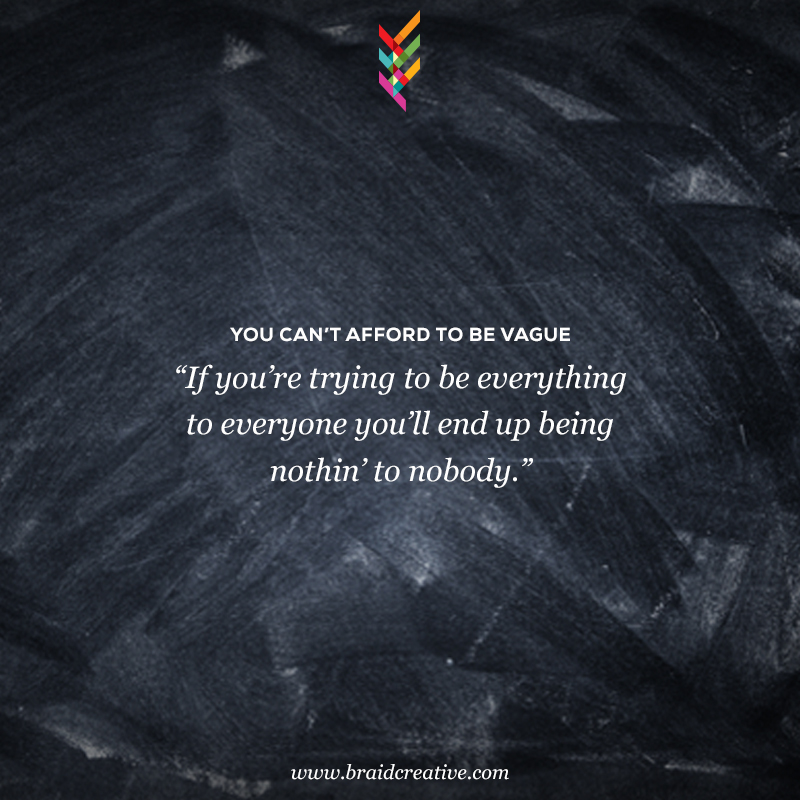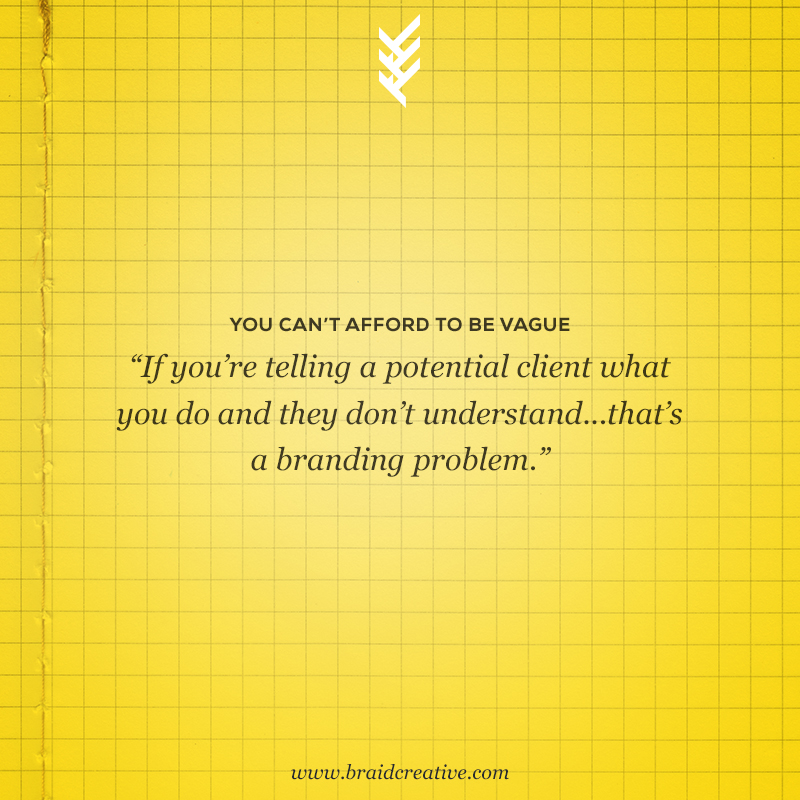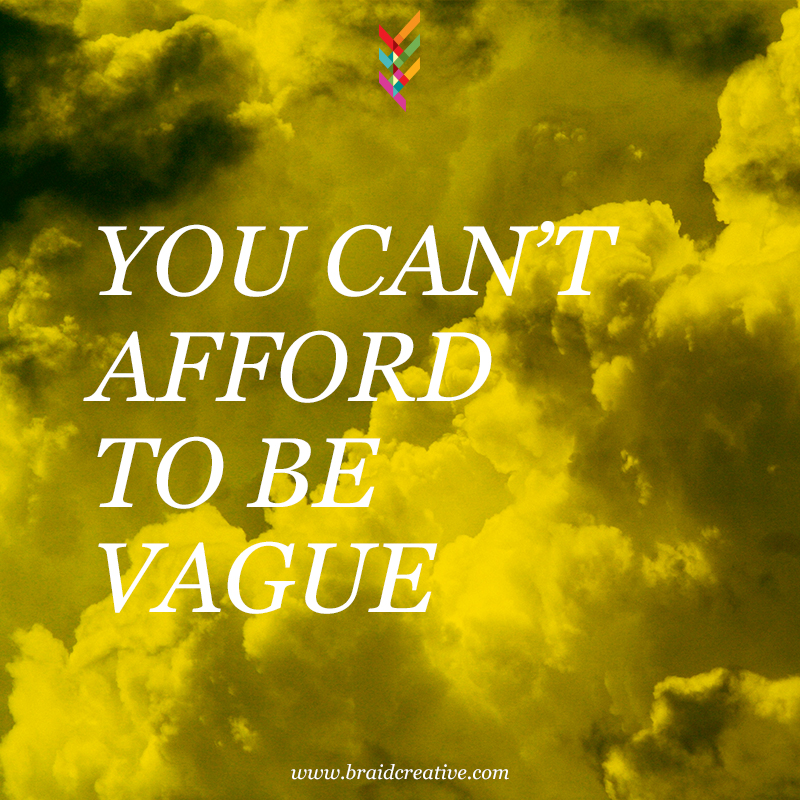
Most of us as individuals have big hearts and a big vision for our brand and our business that doesn’t exclude anybody from the discussion (or our services, product, or offering). In fact, we work with a lot of leadership development professionals, coaches, educators, and purpose-driven organizations who have all but eradicated the word “or” from their vocabularies to embrace the tone of “and.”
The word “and” opens up the dialogue to new ideas, collaboration, and expansion. The word “or” implies a choice that needs to be made. “And” is super dreamy, but when it comes to differentiating your brand, you are going to have to make some “or” choices. When you can proactively choose who you are and who you’re for, only then can you truly reach the audience your business is built to help.
A good brand is easy to understand
If you’re still having a hard time embracing the idea of getting narrow, think of it less as “being vague vs. being specific” and more as just being easy to understand. For example, imagine you’re getting your teeth cleaned and your dental hygienist asks what you do for a living? You tell her and her reply is “huh, what’s that? What does that mean?” That’s okay because it’s just small talk, right? Probably to distract you from the fact that you’re in a dentist chair. But if you’re telling a potential dream client what you or your business does, and they don’t understand what it is … that’s a branding problem.

Getting aggressively narrow
The fear of eliminating a potential customer from the conversation (or *ahem* marketing plan) might feel entirely counter-intuitive. So we want you to hear this little bit of tough love: you can’t afford to be vague if you’re trying to differentiate your brand, attract your dream customers, and close the deal. Your desire to reach more people by being everything to everyone is actually negatively impacting your ability to reach the customers you can best help. It’s the brands who are willing to go out on a limb and be specific that are making money for themselves and creating impact for their communities. It’s the specificity of their brand that builds instant trust, credibility, and buy-in from their dream customers and brand evangelists.

TRY THIS: Imagine your brand through the eyes of just one person – your dream client. This can feel aggressively narrow, but just remember it’s an exercise in specificity, even if you just make a few changes to speak to “them” more clearly. Audit your entire website—from your sales page to your contact form—through their eyes. Is it easy to understand what you do? Is it clear you’re for them? What’s missing? Then go through your social media feed and even your physical space if you have one. Does it strike the tone that appeals to them? What could make them feel more at home in your brand – in person and online? What kind of impression are you leaving on them?
Once you audit your brand through the lens of your dream customer and their first impression, you’ll start to see how getting aggressively narrow isn’t as exclusive as you may have thought. For example, let’s say your dreamiest potential client loves cacti (because who doesn’t?). Her feed is filled with photos of cacti and brunch. So you start bringing more cacti into your space to make her feel more at home in your space. Now this cactus is not going to completely repel that one guy who needs what you have to offer but couldn’t care less about succulents. Or you might find that more people love cacti than you gave them credit for. P.S. The cactus is not just a cactus: it’s the words, colors, photography, and style you use to talk about your brand.
Want to get these articles straight to your inbox? Be sure to sign up for the Braid Creative newsletter:

